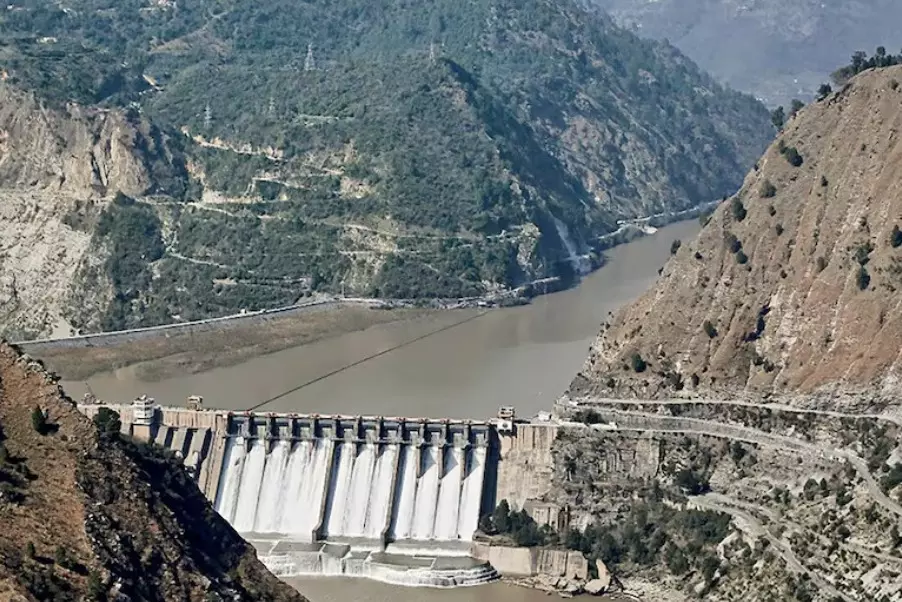India suspends Indus Water treaty, paves way for fast-tracking hydropower projects
India Suspends Indus Water Treaty, Paves Way for Fast-Tracking Hydropower Projects

In a significant move following the deadly terror attack in Pahalgam, Jammu & Kashmir that claimed at least 26 lives, India has placed the Indus Water Treaty (IWT) with Pakistan in abeyance. This unprecedented action—taken on April 23—marks the first time India has paused the treaty, even though past wars and hostilities with Pakistan never led to such a decision.
What Does the Suspension Mean?
While the suspension won’t immediately stop or divert the flow of river water to Pakistan—since no large dam currently exists on the western rivers (Indus, Jhelum, Chenab) capable of doing so—it effectively halts routine data exchanges. India will no longer share critical seasonal updates, including flood forecasts and irrigation statistics, which Pakistan has traditionally relied on between July and October.
An official from the Union Jal Shakti Ministry confirmed:
“What stops right away are the daily exchanges of information. Water regulation, however, remains unchanged as there’s no infrastructure yet to directly control flows.”
Under the 1960 treaty, India is allowed full usage of the eastern rivers—Ravi, Beas, and Sutlej—while Pakistan receives water from the western rivers. Approximately 80% of Pakistan’s water supply (135 million acre-feet) comes from the Indus system, 93% of which is used for agriculture.
Hydropower Projects May Get a Boost
Experts believe the suspension could open doors for India to finally accelerate long-delayed hydroelectric projects, particularly in Jammu, Kashmir, and Ladakh.
A senior official from NHPC, India’s top hydropower agency, said:
“For years, we’ve been stalled by objections and arbitration initiated by Pakistan for almost every project we planned. Now, we have a chance to work without constant interruptions.”
The Kishanganga (330 MW) project, previously embroiled in international arbitration, and the Shahpurkandi dam on the Ravi are among those expected to benefit from this shift. Major upcoming projects such as Kiru (624 MW), Kwar (540 MW), Kirthai I & II (1,320 MW), and Sawalkote (1,856 MW) in the Chenab Basin could now move forward more swiftly.
Notably, no new hydropower project has been commissioned in Jammu & Kashmir in the past five years, largely due to treaty-related delays.
The Strategic and Legal Landscape
Former Power Ministry Secretary noted that India may now even consider building a dam on the Indus itself—similar to China’s approach on the Brahmaputra—despite anticipated pushback.
However, the treaty includes a multi-tiered dispute resolution process involving the Permanent Indus Commission, a neutral expert, and eventually, international arbitration. Pakistan has already signaled it will contest India’s move legally, diplomatically, and on global platforms.
Pakistan’s Power Minister Sardar Awais Leghari described India’s action as “water warfare,” asserting his country’s right to the western rivers.
Meanwhile, former Indus Water Commissioner Pradeep Kumar Saxena noted that Pakistan has often used the treaty as a diplomatic tool to stall India’s development. He emphasized that while exiting the treaty is not currently an option, suspending information flows gives India strategic breathing room.
Looking Ahead
While this suspension doesn’t instantly alter the status quo of water flow, it does shift the geopolitical and infrastructural landscape. India now has an opportunity to reduce delays, boost energy capacity, and assert its development rights along the Indus Basin—so long as the suspension continues.
The coming months will reveal whether this bold move becomes a game-changer in South Asia’s hydropolitics or leads to a fresh round of international arbitration.

